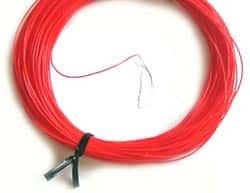Many sectors, including industrial and consumer electronics, continue to use wire harnesses, and their use is increasing continuously. Therefore, there is an urgent need to understand the process of manufacturing this vital component. Wire harnesses link different electrical or electronic modules to allow the complete system to work seamlessly.
Wire harness assemblies are a bunch of wires processed with a protective sheath. They may end in different types of terminations. Harnessing is important as it organizes the wires for easy implementation. Wire harnesses must not be confused with cable assemblies, which bind multiple covered wires with a protective covering, enabling them to work in harsh environments.
The use of wire harness assemblies results in several advantages. The organized wires optimize space while helping to improve assembly times. The harness helps in customizing the appliance to its bespoke needs. The protective covering on the wires improves equipment safety while improving the life of the wires. A variety of appliances use wire harnesses extensively. These include heavy equipment, panel displays, flight simulators, control panels, vehicles, and more.
The wire harness manufacturing process begins with design. Each product requires a custom-designed harness. It is imperative to choose each component of the wire harness carefully to achieve full functionality and life.
The primary requirement is the length of each wire in the harness. As the wire may require routing through the equipment, the length of individual wires in the bunch may differ. The length of the wires may also depend on their diameter, as thicker wires require more space to bend.
Each wire must also be considered for the maximum current it will carry. In a wire harness, some wires may carry power while some may carry low-frequency signals. They will require wires of different gauges.
Once the designer determines the length and gauge of each wire, they must concentrate on the wire terminations, which are necessary to connect each wire to its starting and ending points. This depends on the end termination of the two devices the wire will be joining. The terminations may use lugs, crimps, connectors, or something similar.
Once the wires are bunched together to form the harness, it will be difficult to identify them individually. Therefore, the designer will require some means of identifying individual wires in the bunch. Ferrules are a low-cost choice for this purpose. They are available in different diameters and individually marked with numbers and alphabets. By using the same combination of ferrules with numbers and alphabets on both ends of a wire, it becomes easy to identify the wire, even after bunching it with several others. However, this identification is only necessary if the operator will connect each wire individually. They are not necessary if the termination ends in a connector.
Next, wire harnesses may require a jig to form them into the final shape necessary for implementation in the system. Once the operator arranges or dresses the wire harness in the jig, they may require a means to bunch all the wires together. This may take different forms, like a plastic wire or sheath covering the full length of the wire harness.

